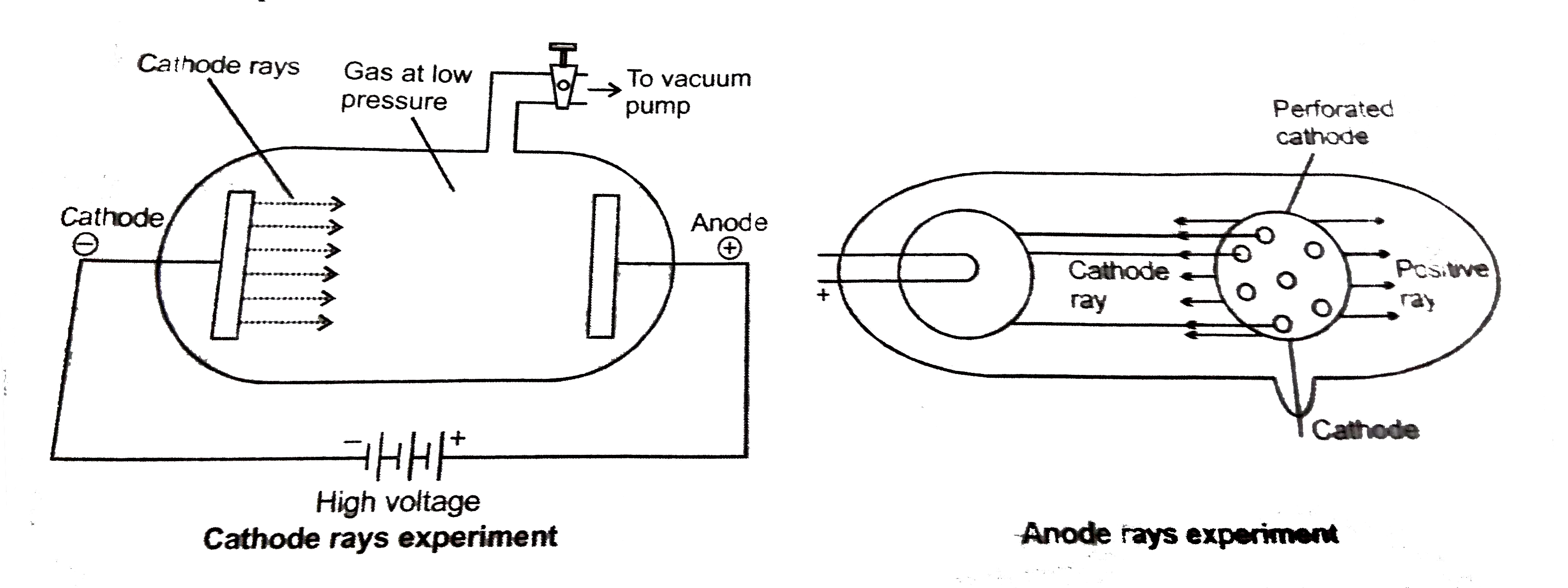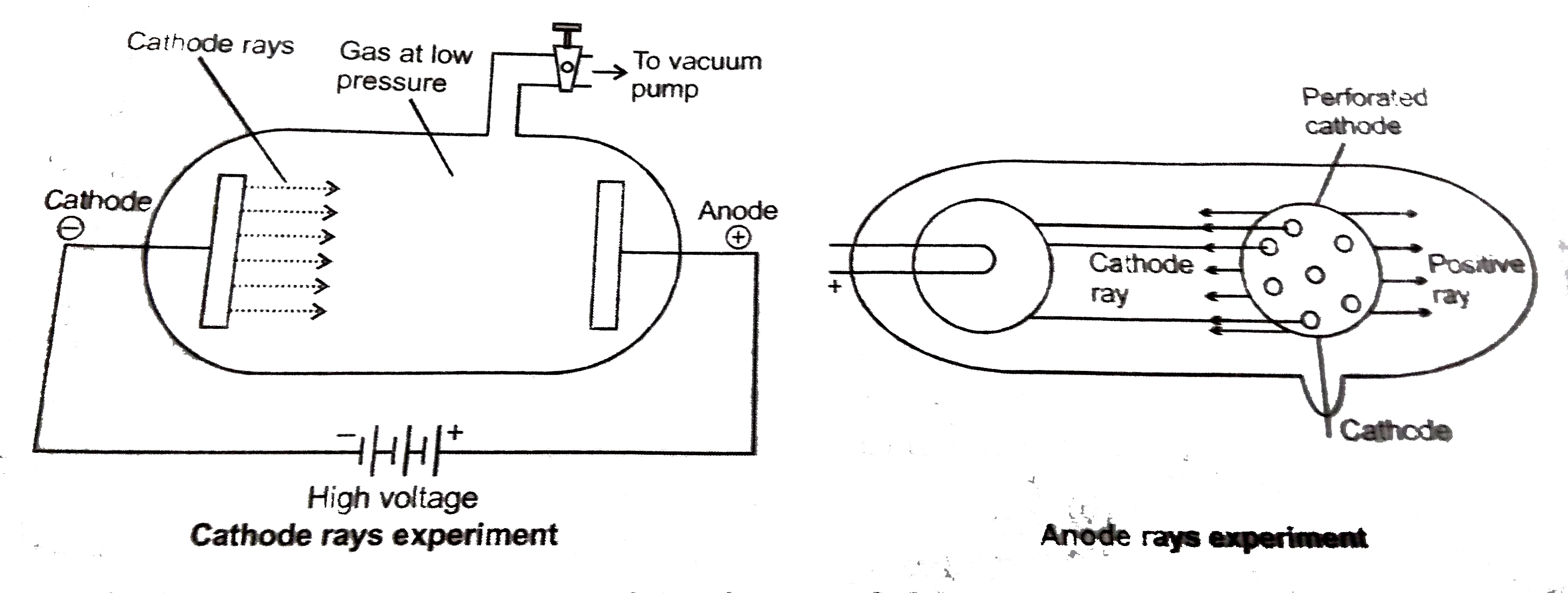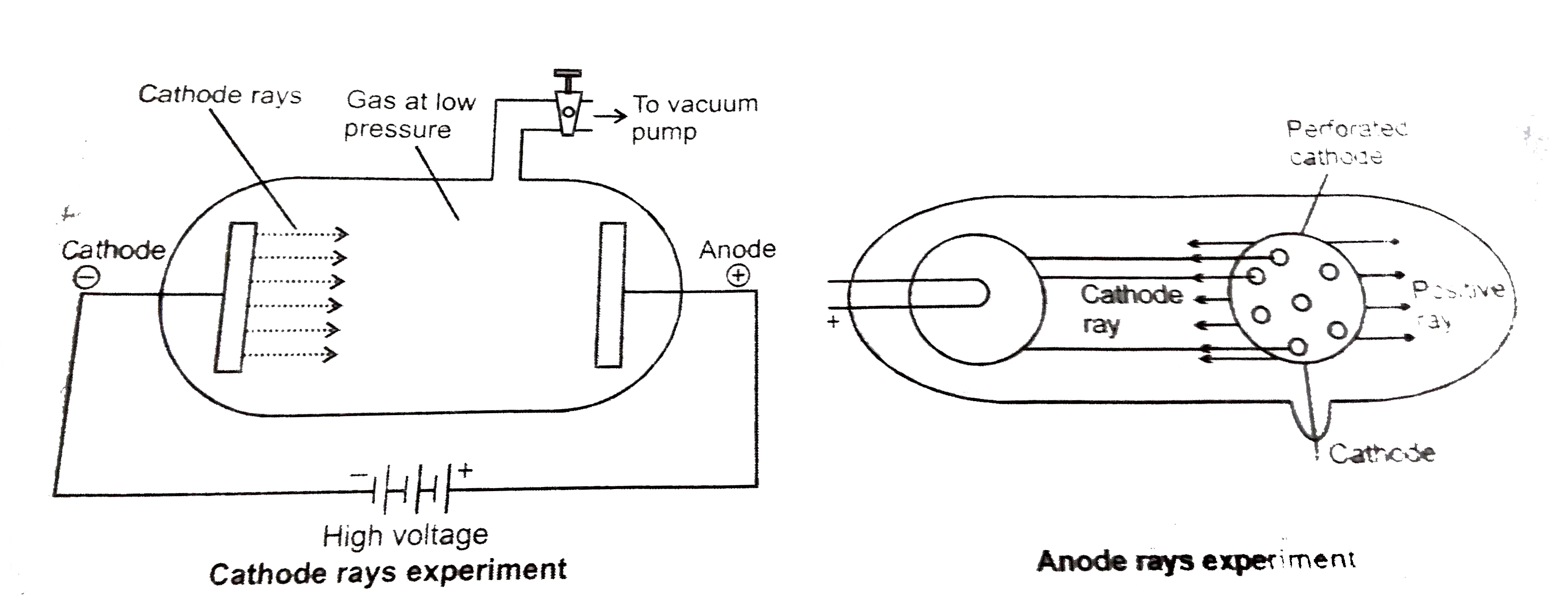Suppose you are given a chance to repeat the alpha-particle scattering experiment using a thin sheet of solid hydrogen in place of the gold foil. (Hydrogen is a solid at temperatures below 14 K.) What results do you expect?
To analyze the expected results of repeating the alpha-particle scattering experiment using a thin sheet of solid hydrogen instead of gold foil, we can follow these steps:
Step 1: Understand the Composition of Hydrogen
Hydrogen consists of one proton and one electron. In solid hydrogen, the atoms are closely packed, but the nucleus is still just a single proton. The atomic number (Z) of hydrogen is 1, which means it has a charge of +1e (where e is the elementary charge).
Step 2: Compare Hydrogen to Gold
In the original Rutherford experiment, gold was used because it has a high atomic number (Z = 79), which means it has a large positive charge and a relatively large nucleus (with many protons and neutrons). This results in a significant deflection of the incoming alpha particles (which are helium nuclei, Z = 2) when they approach the gold nuclei.
Step 3: Analyze the Alpha Particle Interaction with Hydrogen
When alpha particles collide with a hydrogen nucleus (which is just a single proton), the interaction will be very different from that with gold. Since the mass of the alpha particle (approximately 4 atomic mass units) is much greater than that of the hydrogen nucleus (approximately 1 atomic mass unit), the alpha particle will not be significantly deflected when it interacts with the hydrogen nucleus.
Step 4: Predict the Results
Due to the low charge and mass of the hydrogen nucleus compared to the alpha particles, we expect:
- Most alpha particles will pass through the solid hydrogen without any significant deflection.
- There will be very few instances of scattering, and those that do occur will be minimal.
- The results will not provide a clear picture of the nuclear structure, as the scattering angles will be very small and difficult to measure accurately.
Conclusion
In summary, if we repeat the alpha-particle scattering experiment using solid hydrogen, we expect to observe minimal deflection of the alpha particles due to the low charge and mass of the hydrogen nucleus. This will result in a lack of significant data regarding the nuclear structure, making it difficult to determine the size and position of the nucleus accurately.
---
Hydrogen consists of one proton and one electron. In solid hydrogen, the atoms are closely packed, but the nucleus is still just a single proton. The atomic number (Z) of hydrogen is 1, which means it has a charge of +1e (where e is the elementary charge).
In the original Rutherford experiment, gold was used because it has a high atomic number (Z = 79), which means it has a large positive charge and a relatively large nucleus (with many protons and neutrons). This results in a significant deflection of the incoming alpha particles (which are helium nuclei, Z = 2) when they approach the gold nuclei.
When alpha particles collide with a hydrogen nucleus (which is just a single proton), the interaction will be very different from that with gold. Since the mass of the alpha particle (approximately 4 atomic mass units) is much greater than that of the hydrogen nucleus (approximately 1 atomic mass unit), the alpha particle will not be significantly deflected when it interacts with the hydrogen nucleus.
Due to the low charge and mass of the hydrogen nucleus compared to the alpha particles, we expect:
- Most alpha particles will pass through the solid hydrogen without any significant deflection.
- There will be very few instances of scattering, and those that do occur will be minimal.
- The results will not provide a clear picture of the nuclear structure, as the scattering angles will be very small and difficult to measure accurately.
In summary, if we repeat the alpha-particle scattering experiment using solid hydrogen, we expect to observe minimal deflection of the alpha particles due to the low charge and mass of the hydrogen nucleus. This will result in a lack of significant data regarding the nuclear structure, making it difficult to determine the size and position of the nucleus accurately.
Topper's Solved these Questions
Similar Questions
Suppose you are given a chance to repeat the alpha particle scattering experiment using a thin sheet of solid hydrogen in place of gold ofil (hydrogen is a solid at temperature below 14 K). What results do you expect?
View SolutionWhat do you think would be the observation if the α-particle scattering experiment is carried out using a foil of a metal other than gold ?
View SolutionWhat do you think would be the observation if the α-particle scattering experiment is carried out using a foil of a metal other than gold ?
View SolutionWhat do you think would be the observation if the α-particle scattering experiment is carried out using a foil of a metal other than gold ?
View SolutionRaghav is a student of class X who was trying to convert the groundnut oil into solid fat (vanaspati ghee). He took the oil inan appropriate flask having an arrangement for passing hydrogen gas into it. Raghav pased the hydrogen gas into oil and heated them together for a considerable time. On cooling the apparatus, Raghav found that even after heating them together for a considerable time. On cooling the apparatus, Raghav found that even after heating together oil and hydrogen for a considerable time, no solid fat was formed. Raghav shard this problem with his sister Divya who is studyging in class XI. She advised him ot add a certain finely divided substance while heating oil wih hydrogen gas. When Raghav repeated the experiment by adding this substance to oil and hydrogen mixture, then the liquid oil was converted into a solid fat.Divya advised Raghav not to consume the fat prepared by him in the laboratory.
(a) What was he finely divided substance which Raghav was asked to add for converting oil into fat?
What is its function?
(b) What type of substance is (i) an oil, and (ii) a fat?
(c) What is the special name of conversion of oils into fats used in Industry?
(d) What are the two types of chemical reactions exemplified by the conversion of oils into fats?
(e) Why did Divya ask Raghav not to consume the fat prepared by him in the laboratory?
(f) What values are exhibited by Divya in this episode?
View SolutionIn this sectin each item consists of six sentences of a passage. The first and sixth sentences are given in the beginning as S1 and S6. The middle four sentences in each have been jumbled up and labelled as P, Q, R and S. You are required to find the proper sequence of the four sentences and mark your response accordingly on the Answer Sheet.
S1 : On increasing the temperature of solids, the kinetic energy of the particles increases.
S6 : The temperature at which a solid melts to become a liquid at the atmospheric pressure is called its melting point.
P : A stage is reached when the solid melts and is converted to a liquid.
Q : Due to the increase in kinetic energy, the particles start vibrating with greater speed.
R : The particles leave their fixed positions and start moving more freely.
S : The energy supplied by heat overcomes the forces of attraction between the particles.
The correct sequence should be
View SolutionThe existence of negatively charged particle in an atom was shown by J.J. Thomson as a result of the studies of the passage of electricity through gases at extremely low pressure known as discharge tube experiments. When a high voltage of the order of 10,000 volts or more was impressed across the electrodes, some sort of invisible rays moved from the negative electrode to the positive electrode these rays are called as cathode rays.

Cathode rays travel in straight path in absence of electrical and magnetic field . Cathode rays consist of material part and charged particles? Cathode rays produce X-rays and light is emitted when they strike on ZnS screen. Cathode rays penetrate through thin sheets of aluminium and other metals . They affect the photogenic plate and passes heating effect when they strike on metal foil. The raito of charge to mass i.e charge/mass is same for all the cathode rays irrespective of the gas used in the tube.
The existence of positively charged particle in an atom was shown be E. Goldstein. He repeated the same discharge tube experiments by using a perforated cathode. It was observed that when a high potential difference was applied between the electrodes, not only cathode rays were produced but also a new type of rays were produced simultaneoulsy from anode moving towards cathode and passes through the holes or canal of the cathode. These termed as canal rays or anode rays.
These rays travel in straight lines and consists of positively charged particles. These rays have kinetic energy and produces heating effect also. The e/m ratio of these rays is smaller than that of electrons. Unlike cathode rays, their e/m value is dependent upon the nature of the gas taken in the tube. These rays produced flashes of light on ZnS screen and can pass throughs thin metal foils. They can produce physical and chemical changes and are capable to produce ionisation in gases.
For cathode rays the value of e/m:
View SolutionThe existence of negatively charged particle in an atom was shown by J.J. Thomson as a result of the studies of the passage of electricity through gases at extremely low pressure known as discharge tube experiments. When a high voltage of the order of 10,000 volts or more was impressed across the electrodes, some sort of invisible rays moved from the negative electrode to the positive electrode these rays are called as cathode rays.

Cathode rays travel in straight path in absence of electrical and magnetic field . Cathode rays consist of material part and charged particles? Cathode rays produce X-rays and light is emitted when they strike on ZnS screen. Cathode rays penetrate through thin sheets of aluminium and other metals . They affect the photogenic plate and passes heating effect when they strike on metal foil. The raito of charge to mass i.e charge/mass is same for all the cathode rays irrespective of the gas used in the tube.
The existence of positively charged particle in an atom was shown be E. Goldstein. He repeated the same discharge tube experiments by using a perforated cathode. It was observed that when a high potential difference was applied between the electrodes, not only cathode rays were produced but also a new type of rays were produced simultaneoulsy from anode moving towards cathode and passes through the holes or canal of the cathode. These termed as canal rays or anode rays.
These rays travel in straight lines and consists of positively charged particles. These rays have kinetic energy and produces heating effect also. The e/m ratio of these rays is smaller than that of electrons. Unlike cathode rays, their e/m value is dependent upon the nature of the gas taken in the tube. These rays produced flashes of light on ZnS screen and can pass throughs thin metal foils. They can produce physical and chemical changes and are capable to produce ionisation in gases.
Select the incorrect statement.
View SolutionThe existence of negatively charged particle in an atom was shown by J.J. Thomson as a result of the studies of the passage of electricity through gases at extremely low pressure known as discharge tube experiments. When a high voltage of the order of 10,000 volts or more was impressed across the electrodes, some sort of invisible rays moved from the negative electrode to the positive electrode these rays are called as cathode rays.

Cathode rays travel in straight path in absence of electrical and magnetic field . Cathode rays consist of material part and charged particles? Cathode rays produce X-rays and light is emitted when they strike on ZnS screen. Cathode rays penetrate through thin sheets of aluminium and other metals . They affect the photogenic plate and passes heating effect when they strike on metal foil. The raito of charge to mass i.e charge/mass is same for all the cathode rays irrespective of the gas used in the tube.
The existence of positively charged particle in an atom was shown be E. Goldstein. He repeated the same discharge tube experiments by using a perforated cathode. It was observed that when a high potential difference was applied between the electrodes, not only cathode rays were produced but also a new type of rays were produced simultaneoulsy from anode moving towards cathode and passes through the holes or canal of the cathode. These termed as canal rays or anode rays.
These rays travel in straight lines and consists of positively charged particles. These rays have kinetic energy and produces heating effect also. The e/m ratio of these rays is smaller than that of electrons. Unlike cathode rays, their e/m value is dependent upon the nature of the gas taken in the tube. These rays produced flashes of light on ZnS screen and can pass throughs thin metal foils. They can produce physical and chemical changes and are capable to produce ionisation in gases.
Which is not true with respect to cathode rays?
View SolutionRead the following passage and then answer questions (a) - (e) on the basis of your understanding of the passage and the related studied concepts.
Rutherford was the pioneer who established the existence of the atomic nucleus. Result of Geiger and Marsden experiment on the scattering of a-particles from thin gold foils, performed at Rutherford’s suggestion, revealed that the distance of closest approach to a gold nucleus of an a-particle of kinetic energy 5.5 MeV is about 4.0×10−14m. The said scattering effect was explained by Rutherford by assuming that the Coulombian repulsive force was solely responsible for scattering. Since the positive charge is confined to the nucleus, the actual size of the nucleus has to be less than 4.0×10−14m.
If we use a-particles of higher energies, the distance of closest approach to the gold nucleus will be still smaller. At some point the scattering will begin to be affected by the short range nuclear forces and differ from Rutherford’s calculations. From the distance at which deviations set it, nuclear size can be inferred.
(a) Define MeV and express its value in terms of SI unit of energy.
(b) What is distance of closest approach ?
(c) Write an expression for distance of closest approach of a-particle to a gold nucleus.
(d) What was Rutherford’s hypothesis regarding the existence of the atomic nucleus ?
(e) How can you show that volume of the nucleus of an element is proportional to its mass number ?
View Solution
